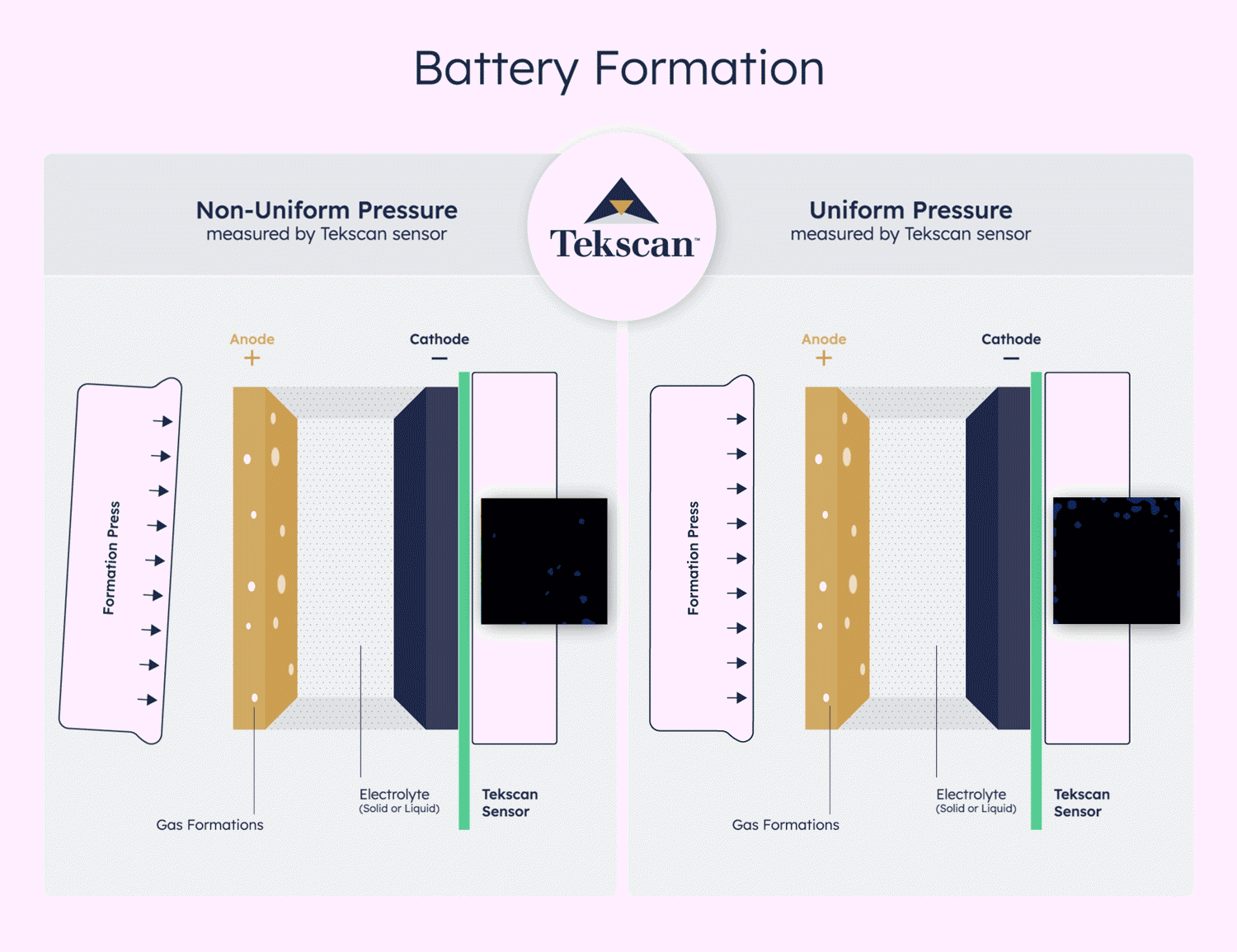The formation phase is essential in the production of batteries, as it substantially impacts their effectiveness and longevity. During this phase, raw materials undergo their initial electrochemical conversion, setting the foundation for the battery’s operational efficiency and stability.
By implementing regulated charging and discharging cycles, the cell experiences vital chemical transformations that determine its operational capacity. With the continuous evolution of energy storage technologies, refining the battery formation procedure is key to creating resilient and high-efficiency options for various sectors.
The I-Scan pressure measurement system from Tekscan offers engineers and technicians crucial data throughout the battery formation phase. This is a prime example of how pressure mapping technology aids in transforming power innovations into tangible outcomes.
Pressure Mapping: Improving the Battery Formation Process
The battery formation stage represents a third of the total manufacturing costs for lithium-ion batteries,1 highlighting its importance as a valuable yet frequently underestimated phase for optimization through real-time pressure monitoring.

Image Credit: Tekscan, Inc.
Ensuring uniform pressure during the formation process can help to:
- Reduce Formation Time: Adjusting pressure can speed up the formation process by improving ion transport and surface reactions. This efficiency can result in reduced formation periods, lower production expenses, and increased manufacturing throughput.
- Optimize Degassing Process. (See animated diagram). Any non-uniform pressure during formation can result in gas formations in the anode layer. Ensuring a consistent pressure distribution throughout the formation process is crucial for minimizing undesired occurrences.
- Ensure a Stable Solid-Electrolyte Interface (SEI): Pressure helps in forming a robust and effective SEI layer. SEI layer prevents unwanted side reactions and enhances battery stability.
- Ensure Uniform Electrode-Electrolyte Contact: Ensuring an even distribution of pressure guarantees consistent contact between the electrodes and the electrolyte. This uniformity supports uniform ion diffusion and effective electrochemical reactions across the battery, which enhances its capacity, cycle life, and overall performance.
- Improve Efficiency: By identifying defective batteries early in the formation process, you can avoid unnecessary energy cycles and reduce waste.
- Tailored Cycling Profiles: Understanding the effects of pressure makes it possible to optimize cycling profiles for various battery chemistries, ensuring peak performance while also preserving longevity.
- Improved Energy and Power Density: Maintaining consistent pressure ensures uniform electrode density, which affects the energy storage capacity and the rates of charging and discharging.
- Manufacturing Consistency: Applying consistent pressure throughout the battery formation process guarantees reproducibility and consistency across batches, resulting in reliable and predictable battery performance for end-users.
The formation process is only one of many steps in the battery life cycle where monitoring pressure can provide value and key insights. Tracking pressure changes in materials R&D, housing design, stack assembly, and manufacturing quality assurance can be the critical difference.
References and Further Reading
- iScience Current and future lithium-ion battery manufacturing Yangtao Liu, April 23, 2021

This information has been sourced, reviewed and adapted from materials provided by Tekscan, Inc.
For more information on this source, please visit Tekscan, Inc.